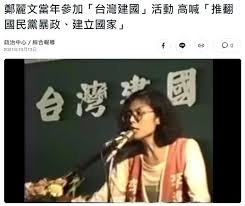On August 21st, American Institute in Taiwan (AIT) Director Raymond Greene met with Taiwan’s Minister of National Defense, Wellington Koo. The following day, he sat down with five Kuomintang (KMT) legislators. In just two days, Greene held back-to-back discussions with both the ruling government and the opposition, underscoring Washington’s dual-track approach in the face of rising tensions across the Taiwan Strait: on one hand consolidating military and security cooperation with the administration, while on the other ensuring open channels with opposition parties so that U.S.–Taiwan collaboration is not derailed by domestic political shifts.
Greene’s meeting with Minister Koo clearly centered on defense and security. Over the past several years, China has intensified its military pressure on Taiwan through routine exercises and gray-zone tactics. Against this backdrop, Washington is paying close attention to Taiwan’s progress in asymmetric capabilities and ongoing defense reforms.
The United States likely reiterated priority items in its arms sales and cooperation agenda, such as missile defense systems, drone deployment, and strengthening logistical resilience. Washington also continues to urge Taipei to sustain its defense budget at over two percent of GDP. Meanwhile, Koo’s initiatives—universal defense training and a more robust reserve mobilization system—are areas of particular American interest, as they directly affect Taiwan’s capacity for self-defense in a crisis.
Just as important, high-level dialogue ensures that strategic communication channels remain open, reducing the risk of miscalculation in a flashpoint scenario. For crisis management, this is crucial.
Immediately after meeting Koo, Greene sat down with KMT lawmakers. This move reflects AIT’s longstanding principle of bipartisan engagement. Washington understands that Taiwan’s Legislative Yuan plays a decisive role in defense policy, budget allocations, and arms procurement. If the U.S. were to limit its interactions to the ruling party, future cooperation could face gridlock.
In this sense, the meeting functioned as both a communication platform and a stress test: Washington was observing whether the KMT could demonstrate a baseline consensus on national security.
Placed in a wider context, the dual meetings become even more telling. On one hand, China is stepping up pressure against Taiwan across military, economic, and diplomatic fronts. The United States, in response, must engage Taiwan’s political actors more directly to signal support and commitment. On the other hand, the new U.S. administration, while continuing a “strategic competition” framework toward China, faces the challenge of ensuring that Taiwan maintains a unified defense posture amid its partisan rivalries. For AIT, this requires careful groundwork.
Thus, Greene’s packed schedule was more than symbolic. It was both a practical exchange on military cooperation and a political safeguard: a way to ensure that, regardless of Taiwan’s internal political shifts, U.S.–Taiwan cooperation remains on a firm footing.
Overall, Greene’s approach of “meeting the minister first, then the opposition” embodies a deliberate dual-track strategy: consolidating defense cooperation with the ruling party while preserving dialogue with the opposition. This is not only the established norm of U.S.–Taiwan relations but also a carefully calibrated response to uncertainty in the Strait. It is designed to safeguard Taiwan’s defense preparedness and democratic stability, ensuring that U.S.–Taiwan cooperation endures regardless of domestic political fluctuations.



